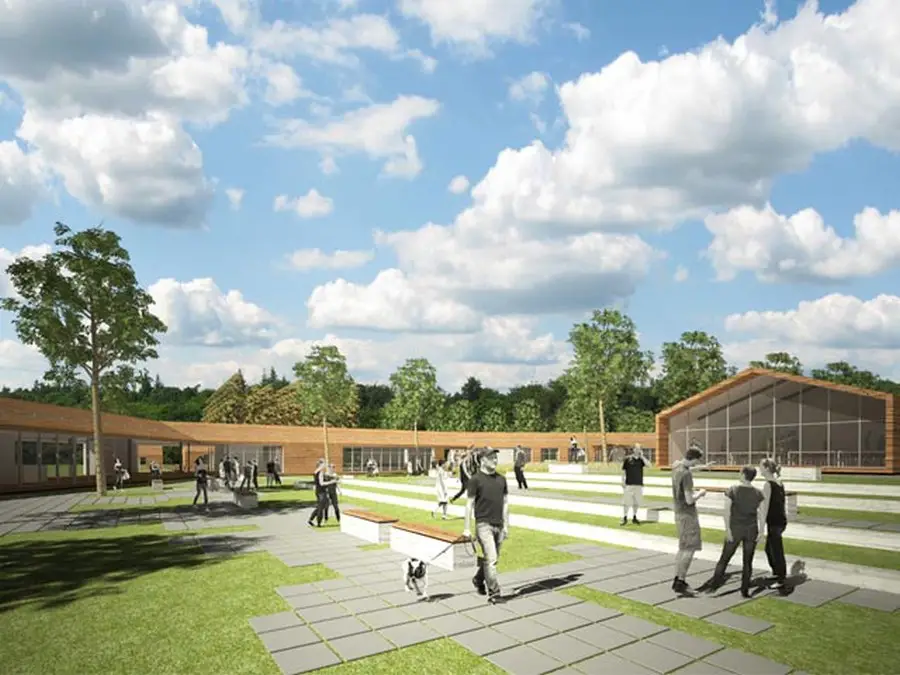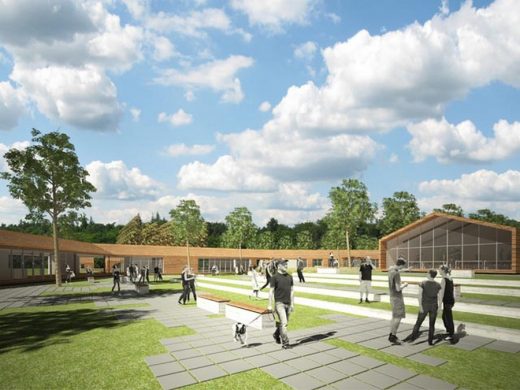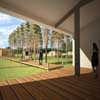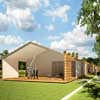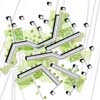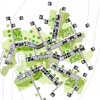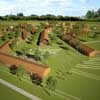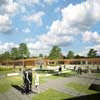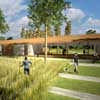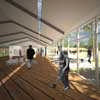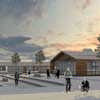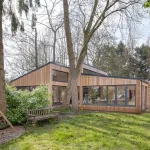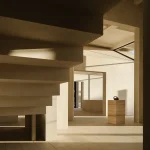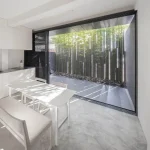Artist Residence Community, Nikola-Lenivets Campus, Russian Architecture, Competition
Artist Residence Community : Architecture
Competition Entry in Nikola-Lenivets – design by Talmon Biran Architecture Studio + Ana Leshchinsky
28 Nov 2012
Artist Residence Community
Design: Talmon Biran Architecture Studio + Ana Leshchinsky
Nikola-Lenivets, Kaluga, Russia
Design Competition Entry for the Nikola-Lenivets Artist Residence Community
Since 2000 the territory of Nikola-Lenivets, located in the Kaluga region in Russia, has become an outpost of contemporary land-art.
Due to the vast area of the Nikola Lenivets territories, our approach to the design task suggests the typology of a campus, a condensed layout providing the facilities for all of the artist residence community– living, learning and creating. The proposed scheme is open ended, allowing flexibility and future growth while integrating the buildings within the landscape.
We defined a structural framework of base and roof which refers both to the local traditional wooden houses and to the concept of docks, structures which float above the ground, allowing landscape to continue uninterrupted. This structural framework, which provides both the physical structure and the technical infrastructure for the entire campus, was organized in several stripes. The orientation has been configured to optimize thermal performance while the overall master plan was configured to have passages the allow views towards the landscape and diversity of open spaces.
The functions of the artist residence – hostels, family houses and communal facilities of workshops, cultural facilities and exhibition spaces – were arranged in hierarchy from the public central plaza to the private residential units.
The strips were developed as a series of interior spaces with semi open spaces between them. In contrast to the distinctive roof plan, the ground plan is rich and flexible, encouraging cross interactions between spaces and among people.
The secluded single houses, designed to look towards the far scenery, were set at the outskirts of the campus, outside the stripes, enjoying privacy on the one hand and the proximity of the campus facilities on the other hand.
CAMPUS CENTER
Our plan suggests re-interpretation of the competition’s program. Instead of placing the workshops within the hostel units, we placed them as part of the campus center, together with the café, a gallery and a multi-functional hall for lectures and events. The constant dialogue between these functions and the outdoor spaces around them – the semi open rooms and the central plaza renders the entire campus center to be a flexible space for artistic work and social activity.
SUSTAINABILITY
Orientation: A climatic analysis discovered that the optimal orientation for maximum efficiency of passive energy and heat production techniques is an angle of 155 degrees. The campus was set in site accordingly.
Typical section:
A typical section was designed to reduce energy consumption and was implemented in the campus plan:
• Openings details on the south façade maximizes direct sunlight at winter but provide shade at summer.
• The north façades acts as thermal mass.
• The floor absorbs heat during winter and releases it into the space.
• Openings in the roof provide natural sunlight and controlled ventilation.
• Integration of corrugated metal panels in the south façades for heat absorption.
• Optional closure of the semi open spaces to serve as sun rooms at winter times.
Energy production:
The roofs are used for sun energy harvest – solar photovoltaic panels to provide electricity for the entire campus in combination with hot water solar panels.
Light and Shadow:
The plan’s geometry and the semi open spaces between the different function optimize the campus outdoor areas allowing maximum direct sunlight at winter and shade at summer time.
Water purification:
The proposal suggests combining a biological water purification system, called the Living Machine, in the campus plan. Located at the lowest strip, it allows easy water collection and filtration both of rain water and grey water.
Artist Residence Community information / images received from Talmon Biran Architecture Studio
Location: Nikola-Lenivets, Kaluga, Russia
Architecture in Russia
Russian Architecture Designs – chronological list
Novy Urengoy Airport, Yamalo-Nenets Autonomous Okrug
Design: Twelve Architects
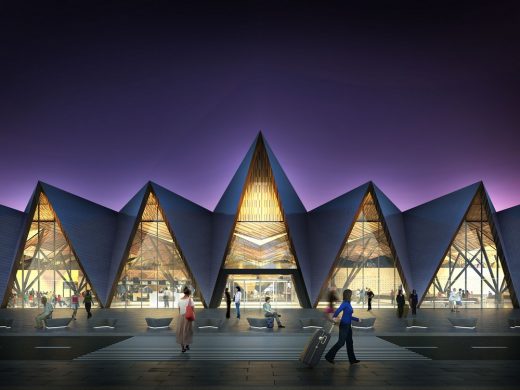
images courtesy of architecture office
Novy Urengoy Airport Building
Russia Tower, Moscow
Foster + Partners
Russia Tower
Comments / photos for the Artist Residence Community – Russian Architecture page welcome

